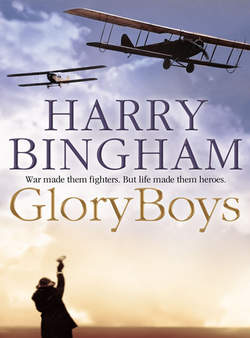Читать книгу Glory Boys - Harry Bingham - Страница 7
PART ONE Beginning
ОглавлениеAfterwards, people like to sit and figure out when it all started.
Mostly people talk about the crash landing, the hot May day in 1926 when an airplane fell clean out of the sky. But there are others who look a little further back. They talk about when the troubles in town first started. They talk about the Volstead Act, the law which prohibited the sale of alcohol the length and breadth of America. They talk about politics and the good old days and the general decline in moral values.
But when you think about it properly, you can see that there is no beginning. Not really. If it hadn’t been for the Great War, there wouldn’t have been Prohibition. If it hadn’t been for the Wright brothers, and Santos-Dumont in France, and all the other guys who spent their lives coaxing chunks of wood and metal to jump into the air and fly, then there wouldn’t have been airplanes, and everything in this story is to do with airplanes.
But if you want to talk about beginnings, then you have to go back to the start. Right to the start. And that wasn’t Santos-Dumont or the Wright brothers, or even Langley and his doomed experiments over the gloomy Mississippi. The beginning was an English guy, name of Sir George Cayley.
Cayley was born in 1773, when George Washington was still a British subject and the good folks of Boston were filling their harbour with forty-five tons of best Bohea tea. Cayley was another one of these guys who ought to have been born with feathers. He wanted to fly. He spent his whole life working on the problem. But unlike all those who had gone before, Cayley got a whole lot of things pretty right.
Up until Sir George, anyone designing a flying machine thought about birds. Birds flap their wings and that’s the whole deal. They get their lift from wings. They get their forward motion from wings. Most of what stops birds rolling around in the sky like corks in a waterfall is built into the wings as well. Lift, thrust and control. All in the same neat instrument.
But that’s birds. Sir George’s particular spark of genius was to see that what worked for birds would never work for humans. So he split the three problems and tackled them separately. He conducted careful scientific experiments on lift, drag and streamlining. He tackled the issues of stability, pitch-control and general aircraft design. He did some tough mathematics and some solid science.
And he got there. He designed the airplane. For lift, he chose a pair of fixed wings, shaped like an aerofoil. For thrust, he chose an airscrew – what we’d call a propeller. And to give his flying machine control, he designed a tail fin and rudder, not a whole lot different from what you see sticking to the ends of airplanes today.
If you want to see the first ever drawing of a working airplane, you’ll find it in the notebooks of good old Sir George. Of course, the gallant knight only had steam engines to play with. There was no way a steam engine of his day would develop enough horsepower to lift itself, an airplane and a human being all together. But he built gliders though, good ones. You want to know when the first true airplane flight in history took place? Answer: in 1853, when Sir George ordered his coachman out of his coach and into a glider. The glider soared happily into the air, flew five hundred yards across a Yorkshire valley, then came to a bumpy rest. The coachman, already the world’s first airplane pilot, wasn’t too keen on becoming the world’s first airplane casualty and he handed in his notice. Cayley, an old man now, quit building gliders and died almost fifty years before the Wright brothers left earth at Kitty Hawk.
So, if you want a beginning, there it was.
Lift, thrust, control. Three problems. Three solutions. The start of everything.
